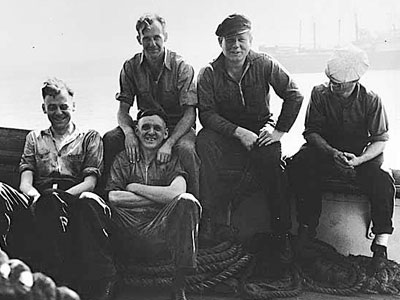

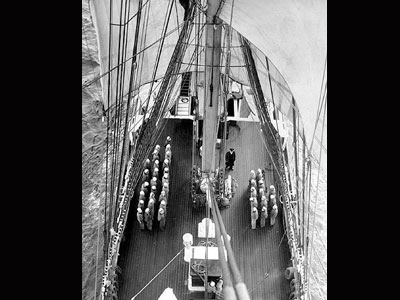
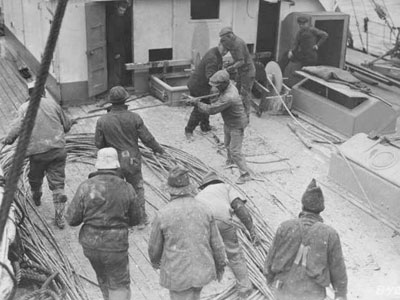
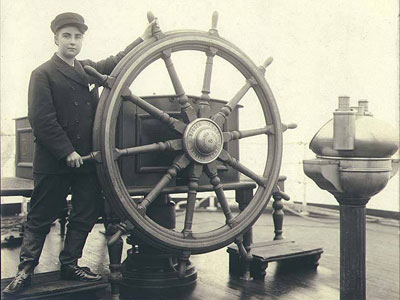
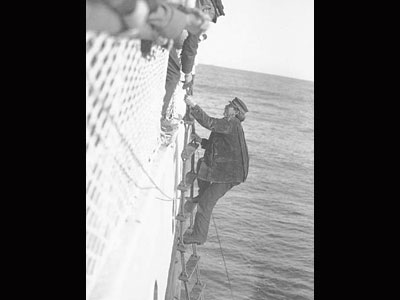

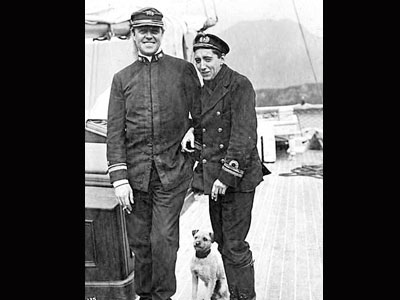

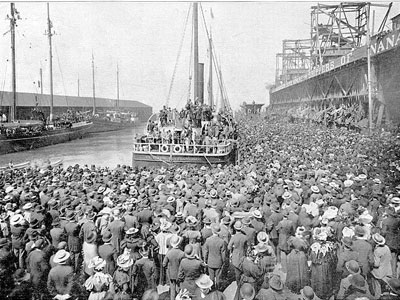
Photo Archive This is a sample of historical photographs. Links below lead to original essays, finding aids, and more.
Sailors and seamen are at the heart of the maritime tradition. For hundreds of years these ocean going workers have maintained a culture and tradition all their own - one imbued with the romance and adventure of the sea. The seafarer tradition is also one of organizing, labor unions and struggle. In the early 1880s, mariners on the Pacific coast formed the unions that would become the Sailors Union of the Pacific, the longstanding organization representing seaman and maritime workers in the West. Over the course of a hundred and twenty years the union has evolved to meet the changes and challenges of globalization and a modernizing industry.
In the nineteenth century sailors were treated abysmally, enduring dangerous working conditions and minimal living conditions while at sea, and often scammed, hustled and taken advantage of on shore. Sailors attempted in various ways to improve their lot, including forming unions, but mariners’ ability to organize was hindered by the nature of the work. The industry requires a migratory and fluid workforce; sailors find themselves in foreign cities, with changing crews and few local ties.
More Information
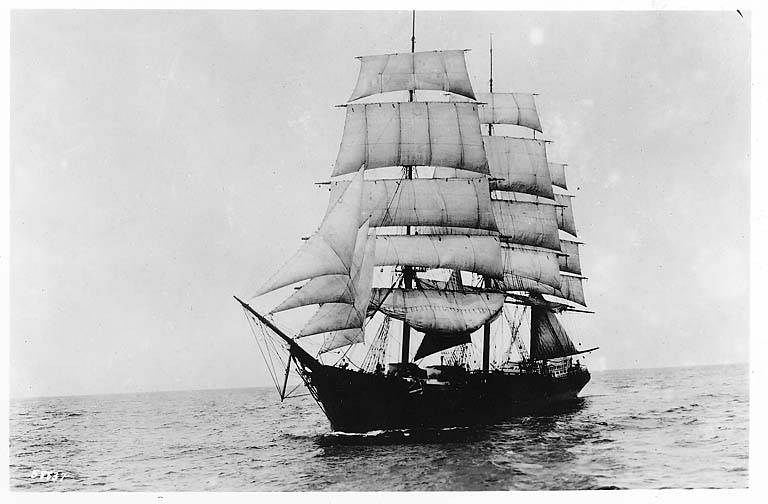 The Sailor's Union of the Pacific continues to fight for the interests of working mariners. On their site you will find links to the history of the union, job training and opportunities, their monthly newsletter and an apparel shop. Their offices are based in San Francisco.
The Sailor's Union of the Pacific continues to fight for the interests of working mariners. On their site you will find links to the history of the union, job training and opportunities, their monthly newsletter and an apparel shop. Their offices are based in San Francisco.
 Guide to the Shaun Maloney papers at the University of Washington Special Collections. Maloney was an SUP member before he was expelled in 1949 for his solidarity with a Canadian union that the SUP suspected of communist influence. Maloney went on to become five time president of ILWU local 19. He's papers also include his experience in the 1934 teamster strike in Minneapolis during which he was injured by police.
Guide to the Shaun Maloney papers at the University of Washington Special Collections. Maloney was an SUP member before he was expelled in 1949 for his solidarity with a Canadian union that the SUP suspected of communist influence. Maloney went on to become five time president of ILWU local 19. He's papers also include his experience in the 1934 teamster strike in Minneapolis during which he was injured by police.Efforts to build a permanent union crystallized in 1886. Sailors outraged at their intolerable working conditions launched the Sailors Union of the Pacific (SUP). The Union quickly joined with similar organizations representing mariners from the Great Lakes, Gulf Coast, and Atlantic ports to form the International Seaman’s Union (ISU), an AFL affiliated umbrella organization.
The SUP leadership, in particular President Andrew Furuseth, believed in organizing by craft and fighting for bread and butter issues, in the manner of AFL leader Samuel Gompers. Furuseth also headed up the International Seamen’s Union which was instrumental in passing the 1915 Seamen’s Act. The law ended the authoritarian order on ocean going vessels and gave seamen important legal rights, in particular the right to disobey a work order and not be charged with criminal mutiny. The 1915 Act built on legal gains from the late 1890s that ended corporal punishment for seamen.
This early period of legal and organizational victories reached a high point at the end of World War I, but then the tide turned against the working mariners and their unions. Two strikes, one in 1919 and another in 1921, marked this quick turn around. In the 1919 strike sailors won concessions on wages and working conditions. As the industry was experiencing a boom from war-time shipping, sailors wanted higher wages and more respect on the job; and they were largely successful.
The 1921 strike, on the other hand, was a devastating blow to the Sailor’s Union. The impetus for the strike was an employer offensive against the gains by workers of the previous several years. The sailors were divided. Employers fostered racist attitudes and then hired black and minority workers as strike breakers – the same workers that had been excluded from the all-white unions. After a two month strike workers saw their wages reduced by 25 percent, and the rest of the decade and into the 1930s marked a low point for maritime unions.
It wasn’t until the 1930s that mariners were able to recover from the government repression of the 20’s. The pivotal moment came in the 1934 West Coast maritime strike where sailors played a significant role in the victory, honoring the longshoremen’s picket lines and supporting the San Francisco general strike. This brought a revival of maritime unions in general, including the sailor’s SUP, as victories on the picket line against employers, and the federal government’s apparent willingness to defend authentic unionization, boosted the number of unionized workers.

SUP President Andrew Furuseth in 1879
Despite the gains, continued political, personal and ideological differences proved heavy impediments for efforts to unify. Longshore workers, with a strong democratic tradition and communist influence were working closely with the industrial minded CIO, while the more traditional sailors allied with the AFL. One time strategic allies, the longshoremen represented by Harry Bridges and the sailors now headed by Harry Lundeburg became arch rivals.
Meantime, the ISU quickly fell apart and the Seafarers International Union rose to take its place. The SUP under Lundeburg and other like minded unions allied with the SIU soon after its formation. The next decades saw the two factions, Lundeburg and the seafarers and Bridges and the longshore workers, engaged in periodic raids and organizing drives against opposing unions. Racism, anti-communism and other political differences kept maritime unions apart. Yet the period of post war American prosperity meant that unions were able to fight for bread and butter issues on their own, and were largely successful.
In the years since, the sailor's union, like most labor organizations, has struggled to maintain itself in a hostile political environment. Changes to the industry, reduction in the workforce, outsourcing, and a lax regulatory environment have all contributed significant obstacles to building a strong union. Nonetheless the SUP carries on; its work defending the interests of sailors is as important as ever. In the "Section Highlights" column to the right you'll find links to the SUP homepage which has a detailed history of the union, as well as information on their current struggles.